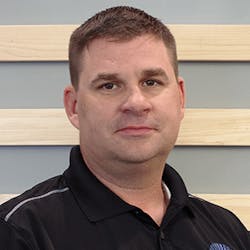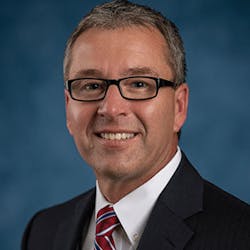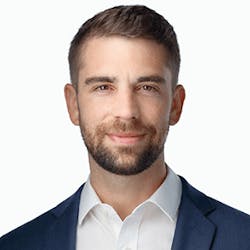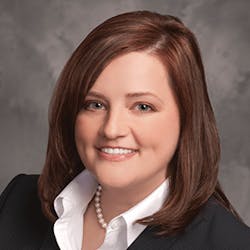
ICT Visionaries Get Candid in Part 2
Wonder what our six ICT Visionaries think about ways to attract and retain talent? How about their perspective on the metaverse or proactive network management? Read on and decide whether you agree with their opinions–or why you don’t. Then, consider hosting a lunch-n-learn with your team to discuss how THEY would respond.
Remember, it’s not what you learn–it's what you DO with it that matters.
Topic: Customer Care and WIFM
A US Telecom Report shares that 82% of telecom consumers will consider alternatives if they experience a poor customer journey. Almost 30% of them would abandon the purchasing process entirely. Another study, according to the-future-of-commerce.com, says that TV and Internet service companies could potentially lose $172 million due to word-of-mouth comments (good and bad). This speaks to the need to break down silos between network operations and customer care operations. How can CSPs break down the silos that impede collaboration across network and customer care teams?
Source: https://www.the-future-of-commerce.com/2021/11/12/stats-and-telco-trends-2022/
Topic: Attracting Tele-Construction Talent
Below is a quote from “The $65B Gordian Knot” sharing how the Telecom/ICT industry is facing a problem that could impact scaling 5G across the country.
“Veriforce reported on a survey of telecom executives who were said to collectively employ more than 240,000 contractors. According to the study, the top challenge facing telecom companies is currently skilled workforce availability, with 86% of company executives naming skilled labor as the top challenge facing the industry.
Meanwhile, underlying activity for other telecom work, especially 5G, is also expanding, placing further stress on employment resources. Closer and more frequent 5G towers are primarily served with fiber all the way to the radio head. Twelve (12) leading telecom industry trade associations wrote a letter in January 2021 to President Biden urging more workforce development. It was projected that 5G alone would create three million direct and indirect jobs by 2025. A letter from the 5G industry concluded: While the jobs are there, our American workforce is not currently ready to fill them.”
Michael Render is Owner/Principal of RVA LLC. He has over 35 years of marketing research experience, including corporate consumer and B2B brand leadership.
What is preventing the Tele-Construction segment of our industry from attracting and retaining skilled labor? What can be done to change this?
Topic: Metaverse
Today’s digital world has provided us with the tools to bring all industries into the next generation, where AI, VR and other innovations will create an immersive digital metaverse. Before we get there, CSPs need to ensure their networks will be able to support all of these bandwidth-intensive applications. What are your company’s network optimization tools to help ensure you’re ready for the metaverse?
Topic: Private Networks
EY explains that enterprises are receptive to 5G solutions delivered through disruptive business models. Their study revealed that 77% of businesses surveyed are interested in using private networks to support the implementation of 5G and IoT use cases. In addition, 50% of respondents rate the purchase of private network capabilities as an important 5G investment strategy for their business, citing a range of benefits led by greater network control (68%) and improved network reliability (64%). At the same time, 71% of businesses would consider purchasing 5G through an intermediary such as a mobile virtual network operator (MVNO). How is your company planning to compete in this area?
Topic: Proactive Network Management
ICT industry analysts and observers often focus on service providers’ CapEx budgets. But the reality is that OpEx can make or break providers’ bottom lines. The key to controlling OpEx is to improve network life cycle management for complex fiber, and legacy networks in a cost-efficient manner. What are some proactive approaches you recommend for doing that?
Topic: Managing the Right Way
According to Marc Effron, author of 8 Steps to High Performance, there are a few, science-proven, performance-driving activities that a manager should engage in: great goal setting, transparent coaching and accurately predicting potential. Share your thoughts about this.
Source: www.hbr.com
“Low latency, bandwidth scalability and high-performance connectivity, moving computing closer to the edge, building diversity into the network–this is what the metaverse will need to come to life.”
Topic: Customer Care and WIFM
It starts with strong knowledge and a common language across both organizations. At Arelion, many support representatives have more than one university degree in engineering and networking technologies. In addition, specialized “knowledge leaders” support complex issues and liaise with their counterparts in networks.
Anyone working on a network incident must have access to real-time and accurate data. Because most operations teams work with legacy systems and layers of accumulated complexity, it’s easier to see that a network element is affected, than how a service or customer is impacted. For example, a router or transmission link may be down, but teams can’t reach out proactively to customers about what’s being done to bring their services back. Or, planned changes could face the risk of taking something down inadvertently.
In 2022, we’re transitioning to a new “clean slate” NOC set-up and building our own next-generation inventory system. Structural changes like this are needed to bring about real customer-facing benefits.
Topic: Metaverse
Low latency, bandwidth scalability and high-performance connectivity, moving computing closer to the edge, building diversity into the network–this is what the metaverse will need to come to life. We use sophisticated network analysis, failure simulation and forecasting tools to determine the capacity required to deal with unprecedented surges in peak traffic. For example, combining analytics such as Cisco’s WAN Automation Engine (WAE)1 and forecast tools building on Meta’s Prophet.2 This makes our network extremely robust as evidenced in 2020, when we saw a 50+% traffic growth, almost overnight.
We are also constantly enhancing our network diversity, with several new routes added to our US network in recent years. Moreover, our large coverage of tier 2 and 3 markets helps digital service providers bring their services to the edge, which reduces latency. In a sense, the metaverse is precisely what we’ve built our network for.
Topic: Private Networks
A private network is an island that needs to connect back to the rest of the world to add value.
Though private networks currently see a lot of hype, greater collaboration is needed. The industry currently sits between “fragmented” and “coming together”, where mobile network operators (MNOs) tend to be very local in their thinking.
International enterprises need something broader. Often, private networks will require a highly secure connection from not just one but from multiple mobile networks to public or private clouds, wherever they may be. Solutions that work locally and scale globally.
For Arelion, private networks are a natural extension to what we do–keeping the world connected. It’s just another access layer for a digital service provider to manage. We have a great toolbox to draw from, starting with IPX and IP connectivity to mobile operators, and a global network with dedicated and distributed connections to clouds and data centers worldwide.
RESOURCES AND NOTES
1. https://www.cisco.com/c/en/us/products/routers/wan-automation-engine/index.html
2. https://facebook.github.io/prophet/
BIOGRAPHY: Johan’s career is founded on two things: curiosity and exploration. As an experienced strategist and manager, he led the development of growth strategies, M&A, and long-term corporate strategic planning across various industries, before zeroing in on communications and technology. He believes that a firm commitment to innovation is the key to staying competitive. Experience has taught him that innovation is not defined by organizational charts and that many of the best ideas come from those working with customers or engineering the network. https://www.linkedin.com/in/jottosson/
“How many of us have said, ‘Wow, if I ever get into a managerial position I’m going to operate differently’? So, I think some of this can be learned behavior and some of it is just taking the time to act like a human being. Simply stated, the golden rule of doing unto others is a good cover behavior for many situations.”
Topic: Attracting Tele-Construction Talent
Many areas of America have opportunities for employment that seem unreachable. Many people will either go to college or join the military to seek opportunities outside of their current environment. Retaining and attracting skilled labor comes down to the compensation, satisfaction, recognition, job environment and promotion opportunities.
Be willing to reward those out there in all different environments making it happen. Do not sugarcoat the challenges that come with these jobs. A fair representation of the effort required to function as a skilled Tele-Construction occupation is important. Potential employers should attend organized career day events not just represented by marketing or HR personnel, but also have one or two of your best techs on-site to provide real-world insight.
Topic: Proactive Network Management
Telecom media is partially responsible for the lack of understanding related to provisioning, repair, and maintenance of fiber networks. More emphasis should be placed on the value of operations.
OpEx costs can be controlled by designing the correct fiber network from the first build and staying with network design for the duration of your builds. There are certain network architectures that are less labor intensive than others to maintain. Take centralized split for example. When troubleshooting this network, it has been proven to be less costly than distributed split.
Product selection is a key to keeping OpEx costs down throughout the life of the network. Choosing the correct product can determine downtime duration known in the industry as Mean Time to Repair (MTTR). The use of plug-and-play components from the access network to the home provides for quicker network builds, troubleshooting times, and repair & restoration resolution.
Topic: Managing the Right Way
Much of what Marc Effron has written is based on common sense. Anyone managing personnel would benefit from these guidelines. For some people, some of these fundamental steps are built by example by working for various managers and observing or suffering from their interpersonal skills. How many of us have said, “Wow, if I ever get into a managerial position I’m going to operate differently”? So, I think some of this can be learned behavior and some of it is just taking the time to act like a human being. Simply stated, the golden rule of doing unto others is a good cover behavior for many situations.
I’m in no way discounting Marc’s eight steps because there are several steps in there that some managers wouldn’t have had any experience with. So, each individual reading and considering these steps will find the ones most important and applicable. As I write this, I can think of several managers who would look at this guide for high performance management and decide it is of no benefit to them at all. Care to speculate on what kind of managers they are?
BIOGRAPHY: As a Clearfield application engineer, Kevin Tusing leverages his extensive experience in network design, OSP engineering, communication technology, fiber optic systems and field operations. Prior to joining Clearfield, he spent over 2 decades in the US Air Force and ANG as a Senior Non-Commissioned Officer leading teams in various telecommunication engineering and installations around the world. Kevin also spent 15 years at Cincinnati Bell telephone working as a cable splicer and then manager.
When it comes to distribution, consolidation, management and protection of fiber, nothing comes close to Clearfield’s streamlined, practical approach. With labor lite technologies and products designed for scalable deployment, craft-friendly operation and unsurpassed performance, Clearfield innovates to reduce your pre-engineering and skilled labor requirements while delivering the lowest total cost of ownership.
Whether you’re delivering fiber-to-the-business, home, or cell site, Clearfield has the flexibility to deploy the product platform for your entire range of applications. www.SeeClearfield.com
“When private 5G is utilized to provide a ubiquitous performant wireless network edge, the full solution for most will include low latency Edge Compute, IOT applications running on that Edge Compute, and fiber networks to connect multiple 5G deployments together.”
Topic: Customer Care and WIFM
We continue to build on and enhance our customer’s ability to self-serve across the entire LBGUPR (Learn, Buy, Get, Use, Pay, Renew) life cycle which has drastically changed the way we go about defining and designing our customer’s journey. In the past, we would have designed a product sales journey and an operations journey disconnecting the experience for our customer. We have changed that with a goal of designing products and experience across that life cycle and bringing together all the services a customer buys into one common view. Doing so allows them to service chain products together to build what they need but also to monitor alerts and use them as one, and by doing this in one experience we have brought together the operations experience of the end-to-end service, including our global network operations. While this is more easily achieved for new products, we understand the need for consolidated experience for all our products and services and are working toward that end.
Topic: Private Networks
Lumen is positioned to provide fully operated 5G solutions for customers or to provide the components that customers will need to build their own 5G IoT use cases. When private 5G is utilized to provide a ubiquitous performant wireless network edge, the full solution for most will include low latency Edge Compute, IOT applications running on that Edge Compute, and fiber networks to connect multiple 5G deployments together. Most use cases we have seen also require fiber connections to Cloud Service providers.
Lumen’s global fiber network, inclusive of our metro fiber assets and our Cloud Connection products, can provide network connectivity. But the strategic decision to build our Edge Compute within 5ms latency of 5G deployments and develop a platform we could use or that our customers could use to easily deploy IOT applications or other Virtual Network Functions closer to these 5G deployments was driven by the many IoT use cases enabled by private 5G. Lumen is positioned well to compete as a full-service provider or component provider for 5G IoT use cases.
Topic: Managing the Right Way
As a people leader, it is critical to determine the best ways to motivate employees to engage and deliver results and is a continual focus at Lumen. It is crucial to set great goals, but I believe the goals need to come from the person who will deliver the results. The manager is just coaching the individual in the process to ensure the goals are measurable, align with personal career goals of the individual, and meet the needs of the company.
Having the individual setting their own goals leads them to being more invested in achieving the outcome. It is also important to establish a cadence to check in on the goal, measure the progress toward it, and, if needed, reset it before it's a miss for the person or the company.
BIOGRAPHY: Ryan Korte has more than 26 years of experience in developing and managing advanced fiber-optic network and systems architecture for both Fortune 500 enterprise companies and nationwide telecommunications carriers. In Ryan’s current position, he and his team are responsible for the Lumen Cloud Connect product with connections to all major cloud service providers, 2,200+ public and private data centers, and over 160,000 fiber-enabled on-net buildings.
Learn more about Lumen’s network, edge cloud, security, communication and collaboration solutions and our purpose to further human progress through technology at news.lumen.com, LinkedIn: /lumentechnologies, Twitter: @lumentechco, Facebook: /lumentechnologies, Instagram: @lumentechnologies and YouTube: /lumentechnologies. Lumen and Lumen Technologies are registered trademarks of Lumen Technologies, LLC in the United States. Lumen Technologies, LLC is a wholly-owned affiliate of CenturyLink, Inc. www.lumen.com
“Containing OpEx while maintaining exceptional support levels is important. Proactive Network Management (PNM) is a critical component. One area to focus on is limiting truck rolls for acute customer performance issues. PNM can help.”
Topic: Customer Care and WIFM
Improvement begins with a strong top-down culture that nurtures collaboration. It is important to send a clear and consistent message that is effectively cascaded throughout all levels of leadership and down to frontline teams supporting daily operations.
Creating shared company goals across organizations is an effective method to support cross boundary collaboration. Using SMART goals to clearly set cross functional targets will help promote interdependent performance management. Success is inherently measured by how well teams support one another. Setting effective goals is essential to achieve success. Reporting results in a shared space that is posted and made visible to the entire organization is also important. Effective communications to ensure teams are aware and consistently reviewing results will help to drive accountability. Organizations win or lose as a team.
Topic: Proactive Network Management
Containing OpEx while maintaining exceptional support levels is important. Proactive Network Management (PNM) is a critical component. One area to focus on is limiting truck rolls for acute customer performance issues. PNM can help. For FTTH applications, systems can constantly measure light levels from trail head port, intermediary splitters, customer ONT, and in some cases, in-house company supported devices. Tolerance thresholds are set based on network topology to provide early warning alerts. Negative indicators drive dispatch activity for technician support.
The objective is to conduct proactive network maintenance that mitigates what would have become numerous individual customer service tickets. In our cable systems, each PNM action results in performance improvement to ~75 modems. PNM has proven effective in head count avoidance, which is embraced given the difficulty in attracting and retaining skilled labor. PNM also optimizes MTTR by providing concise data on the location and nature of a network issue.
Topic: Managing the Right Way
All three are important pieces to the people management puzzle. We are fortunate to have a very engaged and forward-thinking Human Resources organization and a supportive executive team.
Goal setting must be ingrained in the company’s culture. Every employee must understand where they fit into the company’s goals and objectives. A popular approach is Objectives and Key Results (OKR). An objective is tied to a key result employing a specific metric to measure the success of each goal. Transparent coaching is an absolute necessity. Employees want to know where they stand; it is our obligation as leaders to be 100% transparent in our mentoring, feedback, and coaching practices. Focus on strengths, but also share feedback on areas to improve when needed. The ability to predict talent is not always an easy one.
In addition to management intuition, the use of a performance matrix can help. One axis is the latest performance rating; the other is potential for advancement. The intersection is the current standing of that employee’s potential, so to speak.
BIOGRAPHY: Wade has been with TDS Telecom for nearly 30 years, beginning as a network technician. He currently oversees the successful deployment of fiber-to-the-home in out-of-territory markets. He provides leadership to internal outside plant construction, route acquisition, and colocation teams, as well as 4,000+ external contracted resources supporting builds in 40+ municipalities across 5 states. He earned a Bachelor of Business Management and an MBA from Herzing College and his associate degree from the Wisconsin School of Electronics.
TDS Telecom, headquartered in Madison, Wisconsin, employs 3,000 people and is a subsidiary of Telephone and Data Systems, Inc. (NYSE: TDS), a Fortune 1000® company. Founded in 1969, Telephone and Data Systems provides wireless, broadband, video, and voice, as well as hosted and managed services to approximately 6 million connections nationwide through its businesses: UScellular, TDS Telecom, and OneNeck IT Solutions. www.tdsinc.com and www.tdstelecom.com
“The technology will ultimately be sold and delivered to the end user in some way, so it makes sense to embrace collaboration and take the approach of ‘selling with, selling to, and selling through’ these disruptive models.”
Topic: Private Networks
Telstra values partnership over competition. Once you stop investing in important technology partnerships, you risk losing relevance to your customers.
High-demand technologies such as 5G are critical components of our go-to-market model, complementary to our other delivery options, for example, hybrid 5G and satellite.
The technology will ultimately be sold and delivered to the end user in some way, so it makes sense to embrace collaboration and take the approach of “selling with, selling to, and selling through” these disruptive models. Since we already own and operate the underlying network technology, we have the flexibility to bring to market any combination of technologies an end user may need.
Topic: Proactive Network Management
OpEx models are critical to an ICT company’s success, especially since many networking services are offered as purely operational and not CapEx investments. A key indicator of healthy OpEx management lies in network architecture. To guide your network life cycle management, ask yourself these questions:
- Does your company integrate its networks post acquisition? If yes, then does the company also integrate its vendor contracts post acquisition? Both are important for identifying and avoiding redundancies and redirecting misaligned agreements that can put an organization at risk for commercial exposure.
- Does your company have appropriate inter-company usage models to provide end-to-end service in-house? If not, many companies take on unnecessary OpEx due to certain business units or product lines procuring local loops/last mile from the general market because they are more incentivized to do so from a user experience and ROI standpoint.
- Is off-net/access pricing benchmarked and reviewed on a regular basis? If yes, are in-term contracts also reviewed as part of that process? Many companies leave legacy services in place with out-of-date technologies priced at out-of-market rates. This can accumulate to a massive drag on the business.
Topic: Managing the Right Way
These principles are spot-on in terms of navigating the changing dynamics between employer and employee. Telstra recognizes this evolving relationship and uses several methods to ensure we are meeting employees’ heightened expectations. It’s no longer a one-way channel from leadership to team members. Employees are taking more active roles in shaping their career development and pursuing opportunities that benefit them most–and they rightfully should! Practices like 360-degree reviews and annual open performance ratings build trust, credibility and transparency between leaders and their teams, and inspire employees to set aspirational goals. Everyone knows what they were rated and why, and what they need to do to drive towards their career goals.
Methodologies like Objectives and Key Results (OKR) allow organizations to set metrics for goals and document a track record over time. It's an interactive, collaborative goal-setting process, fostering an environment where everyone feels comfortable sharing their ambitions and knows they are supported with the tools and resources to succeed.
BIOGRAPHY: Noah is responsible for sales, business operations, further expanding Telstra’s portfolio of technology solutions, continuing to accelerate strategic partnerships, and leading the company’s future direction within the region. He has a diverse and successful background in telecommunications leadership. Most recently, he led Telstra’s Customer Solutions and Architecture group, directing a specialized team of professionals working with customers to harness the full capabilities of Telstra’s products and services.
Telstra’s heritage is proudly Australian with over 70 years’ experience of helping international businesses connect. They operate in every major market and have an unparalleled network and presence in Australia and Asia Pacific. Follow Telstra on LinkedIn: https://www.linkedin.com/showcase/telstra-enterprise and Twitter: https://twitter.com/TelstraEnt. www.telstra.com/americas
“We also have a dedicated transformation office that facilitates ideation sessions with the entire employee base to find additional opportunities to cut waste, increase efficiency and make our business more profitable by reducing operating expenses.”
Topic: Customer Care and WIFM
Reliability, performance, and security are at the core of the Verizon brand. As the consumer’s expectations have changed and technology has advanced, we are also working to provide transparency across the business and to our consumers.
We have the most dedicated, talented engineers who are building our network for today and the future. We engineer resilient solutions that can stand up to severe weather, cyberattacks, fiber breaks and a myriad of other challenges. We have invested in tools that provide insight to issues before they become a problem.
On those rare occasions when an unplanned event happens, we have restructured our business to keep our customers informed and provide timely updates until the event is resolved. We know how critical this network is to keep individuals and businesses connected and we will never stop working to deliver on our promise of providing the most secure, reliable, performing network where and when our customers need it.
Topic: Attracting Tele-Construction Talent
Verizon is constantly evaluating how we are attracting, recruiting, and developing the talented individuals who are building and maintaining our network. We are looking closely at the language in our open job listings, making sure it accurately reflects the role’s responsibilities.
Veterans often come prepared with the skills needed to succeed and thrive in these roles and we are proud to be one of the top employers of military veterans and are rated among the top employers for veterans. In addition to building our relationships with colleges and universities, we are exploring how we can attract individuals from non-traditional backgrounds who are interested in learning and training for these roles.
Topic: Proactive Network Management
Verizon’s fiscal responsibility is at the core of how we operate. Anyone can build and maintain a good network with unlimited resources. It takes exceptional planners and engineers who understand the true cost of ownership with the empowerment to make decisions that will reduce operating expenses in the long term, which will harness the return on investment for our shareholders. We leverage our size and scale to negotiate favorable real estate and utility rates. We leverage our assets to support all business needs instead of segmenting the network. This starts with the transport and extends to our cloud infrastructure, giving us the advantage of utilizing shared resources for our applications. Our tools are designed to remove complexity and automate solutions. We also have a dedicated transformation office that facilitates ideation sessions with the entire employee base to find additional opportunities to cut waste, increase efficiency and make our business more profitable by reducing operating expenses.
BIOGRAPHY: The Network Assurance team is accountable for the reliability, performance, and security of Verizon’s Wireless network. Mary’s team of experts monitor and manage the various networks and applications that are the foundation for Verizon Wireless’s consumer and business services. More specifically, the team is responsible for managing the Verizon Wireless radio access, transport / IP networks and customer experience. Contact Mary at Mary.Nolan@ VerizonWireless.com and follow her on LinkedIn: https://www.linkedin.com/in/maryfiocco.
About the Author
Sharon Vollman
Content Ambassador for ISE EXPO
Sharon Vollman is the Content Ambassador for ISE EXPO. She is passionate about collaborating with thought leaders, SMEs and hard-working doers who design, plan and deploy ultra-reliable broadband networks. Vollman is committed to creating a variety of educational offerings for ISE EXPO attendees that inspire them to connect every U.S. citizen with the broadband networks we all want for our children and grandchildren.
Vollman has created educational partnerships with Broadband Service Providers including AT&T, Verizon, Lumen, Frontier Communications and others. She has covered the telecom industry since 1996.












